Click here to go back to the Index

|
All frames in place, with the finished but unbevelled stem in situ. The rather untidy battens tacked fore and aft will only be necessary until the Keelson, gunwales and other fore-and-aft bracing are checked into the frames prior to planking. |
|
|
In this photo, the three 75x20mm layers of Kauri for the gunwale (deckshelf) have been laminated up in situ on the frames. Once dry, the complete units were removed, excess epoxy was cleaned off, and both sides were run through a thicknesser. Using a standard deck camber, bevels were calculated at each station, and the gunwale was beveled to suit before final refitting in the frames. |
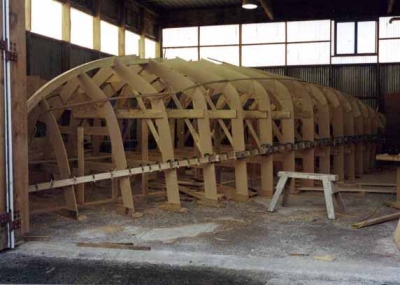 |
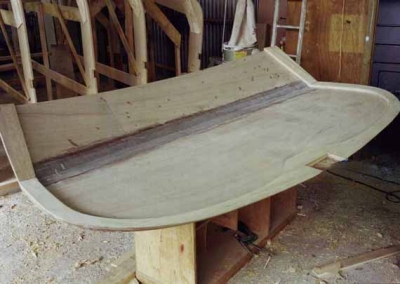 |
The completed transom, showing the Kauri 'grounds' epoxied onto the inner edges. All of the edges have been bevelled to accept the planking, and the inner, lower side has been checked out to receive the keelson. The upper edge (the sheer) has not been trimmed: this will be done once the boat has been completely planked and a final deck camber has been marked. The transom was fitted into the frame matrix at the appropriate 40 degree angle specified in the plans. Planks have since been glued over and past the edges of the transom. |
|
Things a getting REALLY set up: the finished and bevelled stem and keelson have been fitted, the bevelled gunwale is in the frames (the middle fore-and-aft plank in the photo) together with the belting backing plank (the top plank in the photo) and the first REAL plank (the lowest plank in the photo). The first plank for each side was scarphed up on the floor prior to being fitted to the frames. This ensured that they presented a good edge onto which successive planking layers have been fitted. |
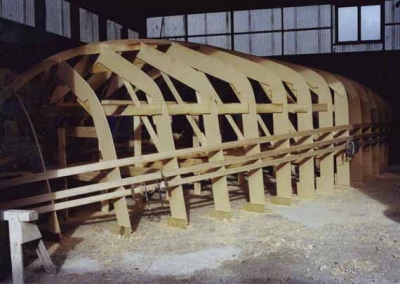 |
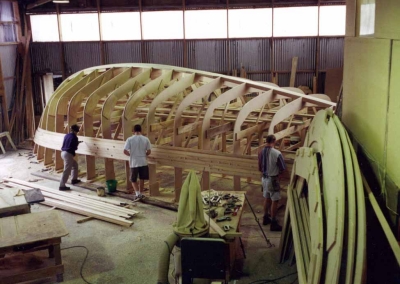 |
Fitting 75x20mm planks to the temporary frames. Each plank is epoxied to the plank below, and the planks are glued to the stem at the forward end, and to the transom at the aft end of the boat. Each plank is temorarily screwed to the frame, and the scarphs (joins) between the planks are glued in place across the frames. The small blocks on the planks are used to align each plank with its neighbour. |
|
Yet FURTHER into planking. As we progressed up the hull, there was increasing 'edge set' in the planks, meaning that each piece of timber was curving down to the bow, and around to the stem and over to the transom more with each level. The twist was going to become unmanageable, so a 'stealer' plank was fitted above the completed planking: we then planked DOWN from that stealer plank, scarphing as we progressed. |
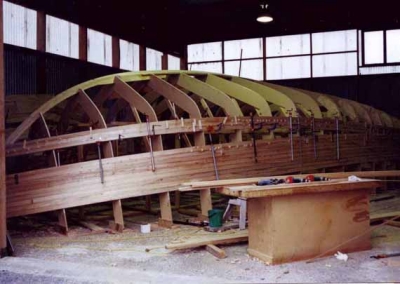 |
